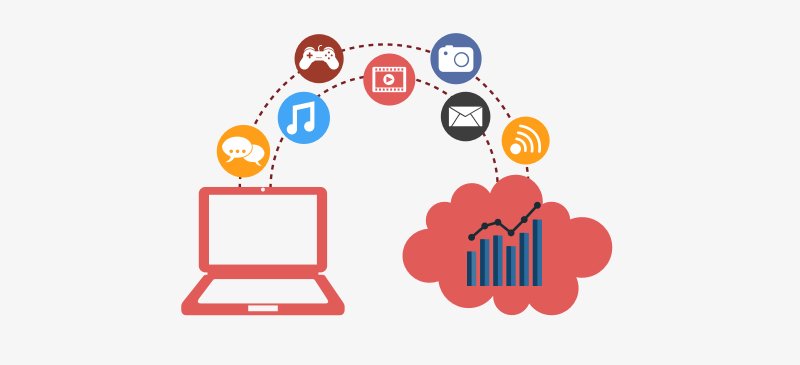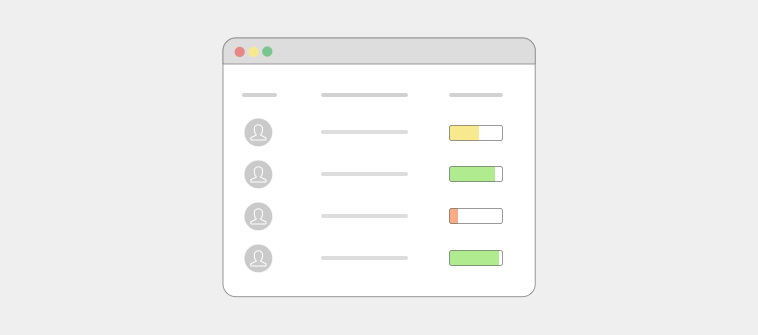If you have just failed to meet a deadline for the first time, you’re probably thinking – nothing more can get any worse. You missed it. It can’t be undone now. Right?
But let me tell you… If you have no clue how to organize projects before a surge of incoming projects appears, that is when the worst is likely to happen – failed projects, company facing losses, confused team, frustrated boss, interpersonal conflict…the list goes on and on!
Now, although there’s no magic bullet that can guarantee these never happen, knowing how to keep projects and tasks organized goes a long way in ensuring you have a framework to follow.
In this blog, I’ll take you on a ride, discussing the tried-and-tested steps to achieve a neatly organized project. They will help you manage multiple projects better.
How to Organize Projects at Work
Or, how do you do it all without losing your sanity? That remains the more practical question here.
Based on my conversations with experienced project managers and team leaders from different brands, organizing projects is not just about creating a to-do list or a calendar for the month.
It is rather about applying a systematic and strategic approach to manage projects from start to finish. So, if you ask – how to organize a project, well, that is what you’ll read below.
Let’s get started.
Step #1: Define Project Objectives
Every successful journey starts with a clear destination. The same applies to projects. Defining project objectives is like setting the coordinates for your journey.
So, before diving in, gather your team and brainstorm the project’s overall objectives. What do you aim to achieve? What problem are you solving?
Be SMART about your approach, i.e., Specific, Measurable, Achievable, Relevant, and Time-bound. This clarity will serve as the guiding light for your team for every decision and action.
| ?Pro Tip: Ensure the project objective is definitive and not vague.For example, it could be –To increase the sales of your product by 20% in the next six monthsTo reduce the operational costs of your process by 15% in the next quarterTo improve the customer satisfaction of your service by 10% in the next year |
Read More: What Are the Objectives of Project Management?
Step #2: Get a Project Management Platform
Even a decade ago, I’d have concluded spreadsheets and manual emails are easily the best way to organize projects. Why waste your money on project management software?
Ironically, it’s just the opposite today.
If you are not investing in a software solution to streamline tasks, manage resources, track time, sync team communication, or automate repetitive tasks – you are wasting your time (a lot of it).
Now, I know, the next question you’ll be asking me is –
How do I choose the right project management tool for me?
Each software has its own features, benefits, pros and cons. So, choosing one depends on your project needs and preferences. I can help you by giving an idea of what some of the prerequisites of such a tool should be.
Ideally, a project management platform should have –
- An easy-to-use interface that lets you create and manage projects in minutes
- Powerful and flexible dashboard to show project status and progress
- Reliable task management tools that lets you assign tasks, set dependencies, track them, etc.
- A customizable reporting tool to analyze project data and insights
- Project collaboration platform that lets you communicate with the team and stakeholders in real time
People also like to read: 20 Best Project Management Software for Sure-Shot Project Success
Step #3: Craft a Project Roadmap
Like how even the best civil engineers cannot construct an overbridge without having a proper blueprint – the same goes for project management.
The best software can only help you organize projects as long as you have a project plan or a roadmap. So, what does this project plan typically include?
- Work Breakdown Structure (WBS): A hierarchical breakdown of the project deliverables into smaller, manageable subtasks.
- Task Dependencies: These are set to identify which tasks need to be completed before others can begin.
- Time Estimates: You need to set realistic timeframes for each task.
- Resource Allocation: This helps you match the right people with the right tasks.
- Risk Management: Identifying the risks that may affect the project which may arise during your project.
Read More: Project Planning: What Is, Importance, How to Implement, & More
Step #4: Establish Project Scope
Defining the scope of your project is like charting the boundaries of your expedition. It portrays the extent of the project, specifying what will be done and, just as importantly, what won’t be done.
Having this clarity is crucial as it prevents “scope creep,” the insidious expansion of tasks and deliverables that can derail a project. By establishing firm boundaries, you ensure that the project remains focused and manageable.
To establish project scope, you need to –
- Analyze the requirements of the project. They are basically the needs and expectations of your stakeholders.
- Prioritize project requirements. This ensures the team understands the importance and feasibility of stakeholders’ expectations.
For more details, read: Project Scope: How to Define & Manage It Like a Pro
Step #5: Identify Project Resources
Every project is powered by its resources, be it time, money, or manpower. Identifying what you have and what you need is a critical step in keeping the project organized.
This goes beyond mere numbers; it’s about understanding the capabilities of your team, the availability of materials, and the budgetary constraints. It’s about ensuring you have the right resources to keep the project moving smoothly.
Now, this is where a resource management tool comes in handy. It helps you –
- Assess the availability and capability of project resources in one place
- Allocate and distribute resources
- Make cost estimates and track billable hours
- Balance available manpower to ensure no one is overburdened with tasks
Related post: 15 Best Resource Management Software & Tools Of 2024
Step #6: Set Clear Roles & Responsibilities
“Too many cooks spoil the broth.”
This is a proverb, as we all know it. But, it conveys an important message, i.e., when roles and responsibilities are not clearly defined, it only leads to chaos.
Similarly, in a project, clarity in roles and responsibilities is the glue that holds the team together. It ensures that every member knows what’s expected of them, reducing overlaps and gaps in the workload.
So, how do you set roles and responsibilities? I’ve made some short bullet points to help you with that –
- Define the Project Scope: Clearly outline the objectives, deliverables, timeline, and constraints of the project.
- Identify Key Tasks & Activities: Break down the project into subtasks to consider what needs to be done to achieve each milestone and deliverable.
- Identify Required Skills & Expertise: Assess the skills and expertise required to complete each task and activity.
- Assign Roles: Do this based on the identified tasks, activities, and required skills.
- Define Responsibilities: Clearly define who is responsible for completing each task.
Step #7: Develop a Communication Plan
Effective communication is the lifeblood of any successful project. Develop a communication plan outlining how information will be shared, how often, and through which channels. Remember, a little communication can go a long way in preventing misunderstandings and ensuring a positive team environment.
While emails and video meetings play a big role in this, they are not often the best ways. Why?
Well, that’s because they take a lot of your time. To send and reply to hundreds of emails or attend team meetings every day, you lose productivity. The way out?
In my experience, a project management platform should be the best way to tackle productivity issues while also boosting team communication. Here are some reasons why –
- Such a tool has team communication and collaboration features like @mentions, task comments, file sharing, etc.
- You can automate project updates, deadline warnings, and other notifications through email reminders.
- Tag associated stakeholders and team members in projects so that they are always updated on the project status.
Related post: 10 Surefire Ways to Improve Team Communication
Step #8: Establish Project Timeline
The one mistake that a lot of project managers unknowingly make is not calculating much when establishing project timelines. The first thing you need to understand is that deadlines are not suggestions.
So, think twice before you create an unrealistic project timeline without considering crucial elements like task dependencies, resource availability, and potential buffer periods for unforeseen delays. You should not set any unrealistic project timeline that is inconvenient for everyone on the team.
Utilize scheduling techniques like the Critical Path Analysis, also known as the Critical Path Method (CPM), to identify the critical path of your project and the sequence of tasks that determines the overall project duration.
(Image Source: Indeed)
You can also use Gantt charts to create or update the project timeline as per the changes in your project plan and scope.
Read More: How to Build a Project Timeline in 6 Simple Steps
Step #9: Implement Project Tracking Mechanisms
Simply put – what gets measured gets managed. Implementing project tracking mechanisms using simple methods like Gantt charts, Kanban boards, or even simple checklists helps in monitoring the progress of your project.
These tools provide a visual representation of where things stand, making it easier to identify bottlenecks, adjust timelines, and reallocate resources as needed.
Implementing project tracking mechanisms can help you –
- Evaluate and control project quality and success
- Detect and correct project errors
- Improve and optimize project efficiency and effectiveness
Step #10: Conduct Risk Assessment
Working with experienced project managers over the years, the one thing I understood is that they are always proactive about risk assessments. They understand that every project comes with its set of uncertainties. So, they always conduct regular assessments to identify potential threats and develop contingency plans.
So, how do you conduct risk assessment in a project? Well, it’s not that tough. Here are some easy steps I have listed below –
- Use risk identification techniques such as checklists, SWOT analysis, and scenario analysis to ensure decent coverage
- Consider both internal and external factors that may impact the project, including technical, financial, and other aspects
- Consider the interdependencies between risks and their potential cumulative effects on the project
- Determine specific actions and measures to reduce the probability or impact of high-priority risks
- Use key performance indicators (KPIs) to alert stakeholders to significant changes in risk status or deviations from planned responses
Suggested read: Project Risk Assessment: All You Need to Know About
Step #11: Leave Space for Unplanned Tasks
Like how you’re more likely to spill a liquid after filling the cup to the brim – the same goes when organizing projects.
Unplanned tasks are inevitable. When you leave space for them, you ensure that the project remains adaptable and resilient.
To leave space for unplanned tasks, you need to –
- Estimate a contingency reserve for your project, which is basically a buffer of extra time, cost, and resources that can be used to accommodate unplanned tasks
- Determine the feasibility of unplanned tasks and their impact on project objectives and deliverables
- Update the modifications and revisions of the step to create project plan and timeline for the entire team
Step #12: Review & Adjust
The best project managers never stop learning. They keep scheduling regular reviews to assess progress, identify areas for improvement, and adjust the plan as needed.
Some of the tools and techniques that can help you review and adjust projects are –
- Project Evaluation Report: It is a document that summarizes your project performance and results to team members and stakeholders
- Project Feedback Survey: You can use a survey tool that analyzes the opinions and suggestions of your project team members
- Project Lessons Learned: Record and share your project experiences with team members and stakeholders
On top of these, what you can do is encourage feedback from your team and stakeholders, as their insights can be invaluable in fine-tuning your approach.
Organize Projects Efficiently With ProProfs Project
Organizing a project is about encountering several challenges and approaching each one with a robust solution. The most experienced project managers do not rehearse every day how to tackle tricky situations but instead know how to be prepared to handle any situation.
With that said, the above-discussed project organization tips will help you get in the boat and row toward success. And to assist you, get a project management platform like ProProfs Project.The tool has a flexible project dashboard that lets you update project status and progress at a glance. Using its features like portfolio management, resource planning, and Personal task management, organizing multiple projects becomes a breeze. Try its freemium plan today!
FREE. All Features. FOREVER!
Try our Forever FREE account with all premium features!





